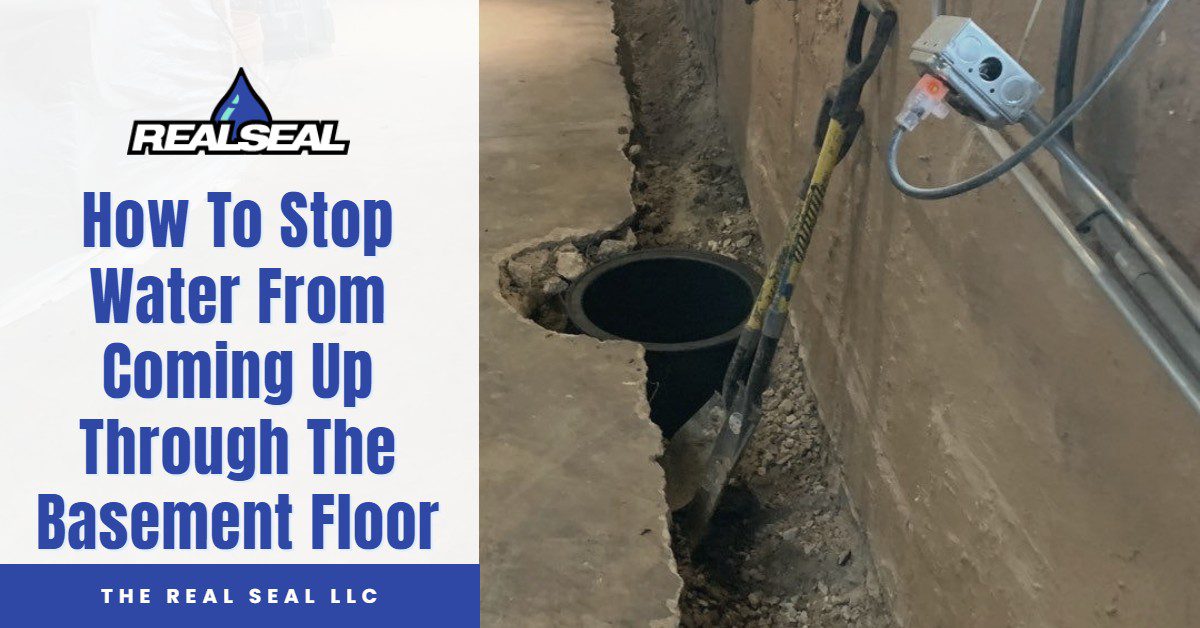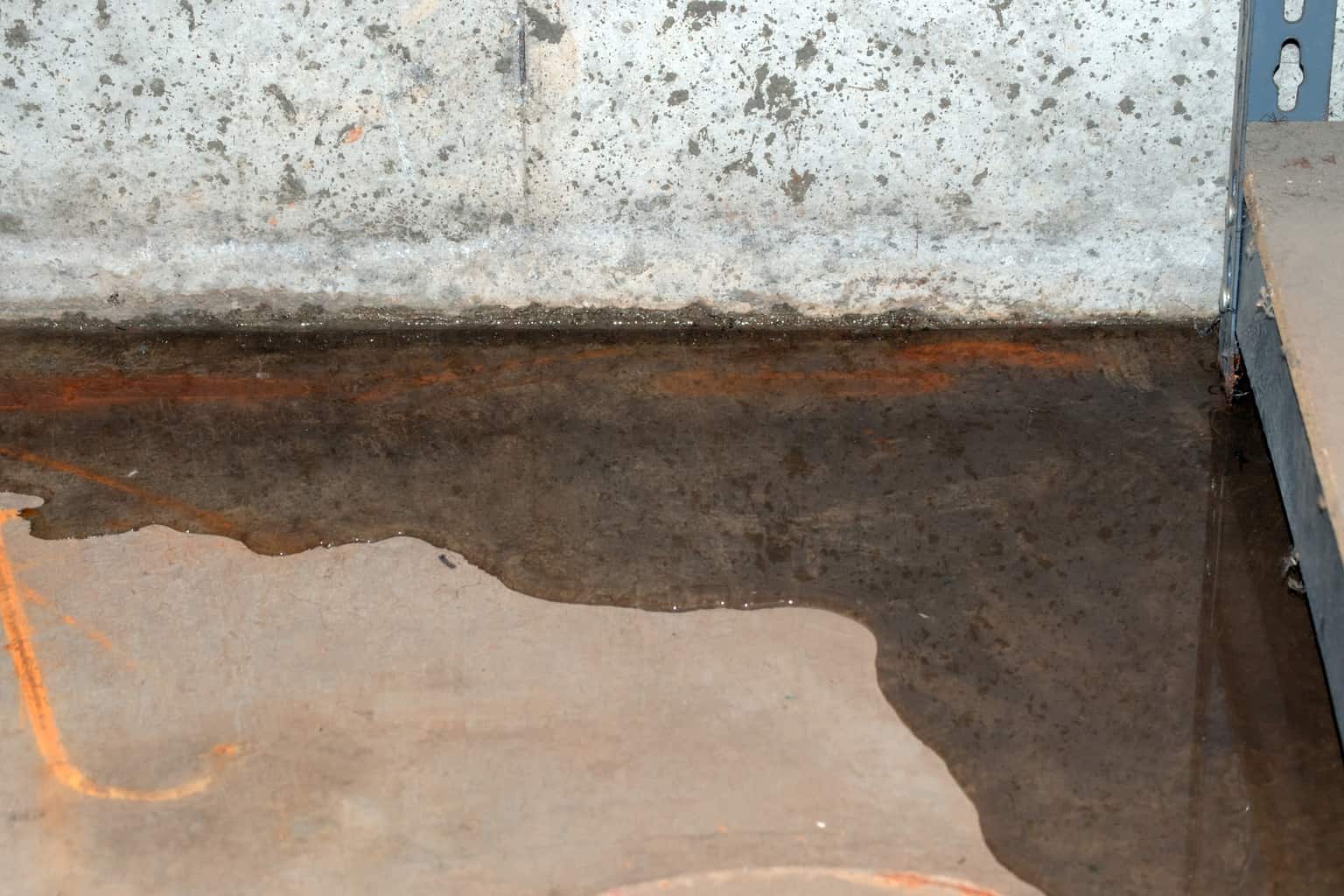Imagine this: you’ve just finished painstakingly renovating your basement, transforming it into a cozy space for your family. You’ve poured your heart and soul into the project, meticulously picking out paint colors, installing flooring, and meticulously sealing every crack. But then, one day, you notice a damp patch on the floor. You sigh with frustration—could the water be coming up from the ground, defeating your efforts?

Image: phenergandm.com
The potential for water to rise through a concrete floor is a common concern for homeowners, especially in areas with high moisture levels, flooding risks, or poor drainage. This phenomenon, often referred to as “moisture migration,” can lead to various problems, from unpleasant dampness and odors to structural damage and mold growth. In this article, we’ll delve into the fascinating world of concrete moisture, exploring the factors that influence its movement, the causes of rising water, and the ways you can prevent it or mitigate its effects.
Understanding Moisture Migration in Concrete
Concrete is a porous material, meaning it contains microscopic gaps that allow water to permeate its structure. When concrete is exposed to moisture, whether from rain, groundwater, or even humidity, water molecules can seep into these tiny pores. This process is driven by capillary action—the ability of a liquid to move upward against gravity within narrow spaces—and diffusion, the tendency for molecules to spread out from areas of high concentration to areas of low concentration.
Factors Influencing Moisture Migration
Several factors can influence the extent of moisture migration in concrete floors:
- Type of Concrete: The mixture and quality of the concrete can affect its porosity. Concrete with a higher water-to-cement ratio will have more pores and will be more susceptible to moisture absorption.
- Curing Conditions: Proper curing of concrete is crucial to minimize moisture absorption. Inadequate curing can lead to increased porosity and weakness.
- Ground Moisture: The presence of groundwater near the surface, especially in areas with high water tables, can significantly increase the likelihood of moisture migrating upward through the floor.
- Hydrostatic Pressure: When water accumulates beneath a concrete floor, hydrostatic pressure can force water upwards through the pores, especially if there are cracks or gaps in the slab.
- Drainage: Poor drainage around the foundation can lead to water pooling near the floor, increasing the likelihood of moisture migration.
- Temperature Differences: Large temperature fluctuations between the interior and exterior of a building or between different parts of the concrete slab can cause moisture to condense and migrate.
Common Causes of Water Coming Up Through Concrete Floors
Understanding the reasons behind water migration is crucial for effective prevention and remediation. Here are some common causes:

Image: jjvs.org
1. Groundwater
In areas with high water tables, groundwater can readily seep into concrete floors. This is particularly problematic in basements and crawl spaces where the ground directly underneath the floor is exposed to groundwater. The water can rise through the pores in the concrete, leading to dampness and potential damage.
2. Hydrostatic Pressure
When a large volume of water accumulates underneath the floor, it creates hydrostatic pressure. This pressure can force water up through the pores in the concrete, especially if there are cracks or gaps in the slab. This pressure is often associated with poor drainage, leaking pipes, or heavy rainfall.
3. Cracked or Damaged Flooring
Cracks or damage to the concrete floor can create pathways for moisture to easily penetrate. These openings act like channels, allowing water to migrate upward and reach the floor surface.
4. Poorly Sealed Joints
Control joints in concrete floors are intentionally created to control cracking due to movement. However, if these joints are not properly sealed, they can act as entry points for water. Water can then seep into the concrete and rise through the pores.
5. Lack of Vapor Barriers
Vapor barriers are plastic sheets installed beneath the concrete floor to prevent moisture from migrating upwards. If the vapor barrier is missing, damaged, or improperly installed, it will be less effective in preventing moisture from reaching the floor surface.
Signs of Water Rising Through Concrete
Recognizing the signs of rising water can help you take action to prevent further damage or mitigate the problem. Here are some common indicators:
- Dampness or Wetness on the Floor: This is the most obvious sign of rising water. You may feel dampness or even standing water on the floor surface.
- Musty or Moldy Smell: Moisture encourages the growth of mold and mildew, which can release a distinctive musty odor.
- Discoloration or Staining: Water stains can appear on the floor surface, indicating areas where water has migrated upwards.
- Bubbling or Peeling Paint: Moisture can cause paint to bubble or peel, especially in areas exposed to rising water.
- Cracking or Buckling of the Floor: As water evaporates, it can leave behind salts that can weaken the concrete and lead to cracking or buckling.
Preventing and Mitigating Rising Water in Concrete Floors
Preventing moisture migration or addressing it once it occurs requires a multi-faceted approach. Here are some strategies:
1. Proper Site Preparation and Drainage
Ensure adequate drainage around the foundation to prevent water from pooling near the floor. Installing gutters, downspouts, and a drainage system that directs water away from the foundation can significantly reduce the risk of water migration.
2. Use a Vapor Barrier
Installing a vapor barrier beneath the concrete slab can effectively block moisture from migrating upwards. Ensure the vapor barrier is properly installed with overlaps and sealed to prevent gaps or leaks.
3. Proper Concrete Mix and Curing
Using a concrete mix with a low water-to-cement ratio and ensuring proper curing are crucial to minimize porosity and enhance the moisture resistance of the concrete.
4. Seal Cracks and Joints
Seal any cracks or gaps in the concrete floor to prevent water from entering and migrating upwards. Use a high-quality sealant specifically designed for concrete.
5. Dehumidification
In areas with high humidity, a dehumidifier can help remove excess moisture from the air, reducing condensation and mitigating moisture migration.
Addressing Existing Moisture Migration
If you are dealing with existing moisture migration, several solutions can help:
1. Drying Out the Floor
Use a concrete drying system to remove moisture from the floor. These systems utilize fans, dehumidifiers, or specialized drying pads to accelerate the drying process.
2. Waterproofing
Apply a waterproofing membrane to the floor surface to create a barrier against future moisture migration. This can involve using sealants, coatings, or specialized waterproofing systems.
Can Water Come Up Through Concrete Floor
Conclusion
Understanding the factors influencing moisture migration in concrete floors is essential for homeowners and contractors. By understanding the causes, recognizing the signs, and employing preventive measures, you can effectively minimize the risk of water coming up through your concrete floor. Whether addressing existing problems or taking proactive steps, remember that a thorough understanding of the process and its complexities will pave the way for a dry, healthy, and durable living space.





